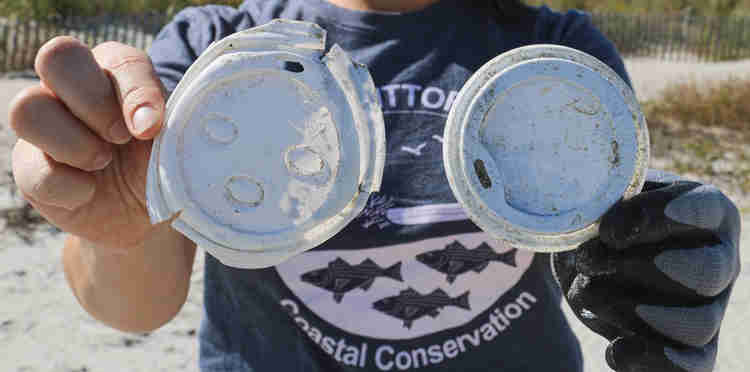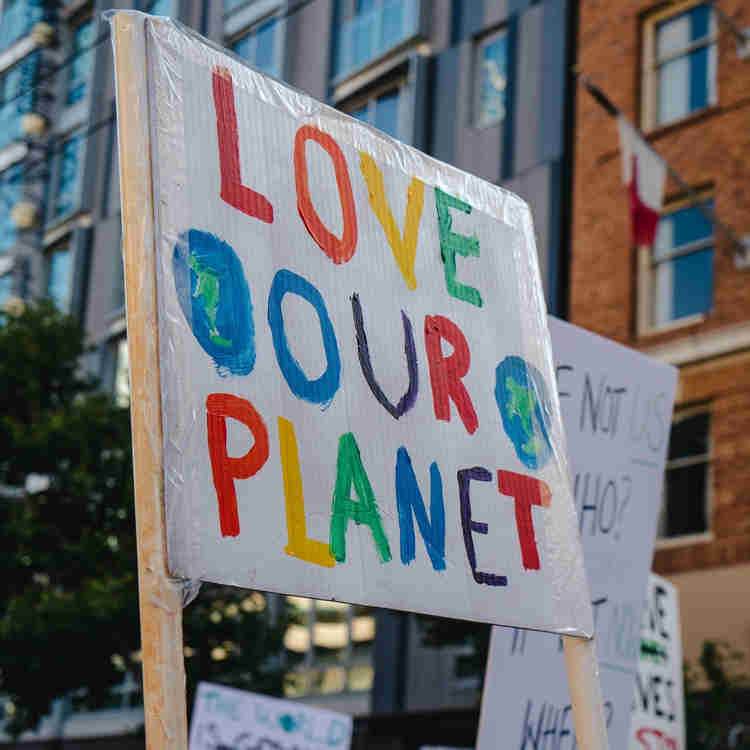Updated: Feb 8
TLDR: individual action is great, but it’s not the whole story…
So, here’s the deal: human society has until the year 2030, at best, to prevent irreversible damage from runaway climate change. This reality check came last year with a United Nations General Assembly report that sent shock waves throughout the world, leading many people to rethink their role in the problem and seek ways to be part of the solution.
Left unchecked, a rapidly changing climate will wreak havoc on the economies that support our livelihoods and destroy the natural systems that we rely on for quality of life and even survival. Many people ask, is making enough progress on such a monumental problem even possible in less than a decade?
The task is definitely daunting. But we owe it to ourselves, and future generations, to give it our best shot.
Without a doubt, the majority of the blame lies with the fossil fuel industry. Increasingly over the past century, they’ve been polluting our air, poisoning our soil and water, heating up our climate, and blocking most stakeholder efforts towards accountability, any efforts to reduce emissions, cleaning up their messes, and turning over a new leaf.
In fact, over 70% of all human-caused greenhouse gas emissions come from 100 corporations alone. But that doesn’t mean we as individuals can’t use whatever privileges we may have to live by our values and contribute to positive change — especially when the majority of the American public wants climate action.
What is a “Carbon Footprint”?
A carbon footprint refers to the total metric tonnes of greenhouse gasses an individual, event, or organization puts into the atmosphere per year. Greenhouse gases, such as carbon dioxide and methane, have a “greenhouse” effect in our Earth’s atmosphere, meaning they trap heat, which raises temperatures significantly over time. The atmospheric concentration of these heat-trapping gases has grown at an exponential rate since the Industrial Revolution and has grown 41% since 1990.
We humans have such large carbon footprints because our society and economy is so dependent on fossil fuel consumption for basically everything, from driving our cars to heating our homes, to eating food that is imported from overseas. These are just a few of the factors that go into calculating a carbon footprint but your carbon footprint is made up of much more than you might realize.
On average, people living in high-wealth nations such as the US have much, much bigger carbon footprints than the carbon footprints of those living in the developing world; in other words, wealthy countries are causing climate change far more than poorer countries — even as the negative impacts of climate change are affecting the most vulnerable people of the developing countries first and worst. This fact is important to keep in mind as we think about how people can reduce their carbon footprint, especially if we’re in a position of relative financial means.
To truly address climate change, we need systemic changes, including a swift transition away from fossil fuels and to 100% clean energy. While we advocate for these policies and work to make this happen, we can use whatever ability we do have to implement positive changes in our own daily routines to reduce our carbon footprints. When people with the means to choose lifestyle alternatives do so, and reduce their personal carbon footprint, they are expanding access to those who otherwise couldn’t afford it — empowering more of us to be on the path to a climate-positive future.
Sources of Carbon Emissions (by Sector)
Transportation
The transportation sector accounts for roughly 28.2% of greenhouse gas emissions in the United States. This involves burning fossil fuels for our cars, trucks, ships, planes, and trains.
90% of the fuel we use for our transportation needs comes from burning petroleum, mostly in the form of gas or diesel.
Electricity Production

Electricity production makes up about 26.9% of our total greenhouse gas emissions.
About 63% of the electricity we use at home comes from fossil fuel consumption, mainly coal and natural gas. As of 2018, it’s the second biggest contributor to greenhouse gas emissions in the United States, right below the transportation sector.
Industry
22.0% of our greenhouse gas emissions come from the chemical reactions needed to produce raw materials – paper, plastic, metal, etc.
Agriculture
Agriculture contributes about 9.9% of our country’s greenhouse gas emissions. This includes the methane produced by livestock such as cows and the decomposition from fertilizer. It also includes deforestation – clearing forests and land for factory farming.
5 Ways to Reduce Your Carbon Footprint at Home
The global scope of climate change can feel so massive that we struggle to even wrap our heads around it, much less understand how it affects us directly or what we can do about it. Here are some ways to reduce your carbon footprint at home and at work:
1. The Five R’s of Reducing Your Carbon Footprint: Refuse, Rot, Reduce, Reuse, Recycle

The production of materials we use every day (plastics, paper, and so on) contribute to greenhouse gas emissions, landfill waste, and ocean pollution.
To prevent all this pollution, we want to keep unnecessary waste to a minimum and make the most out of what we buy. If you have a choice between plastic and glass or aluminum, always go for glass or aluminum. Their industrial recycling process is easy and widely available, while the vast majority of plastics never get recycled.
Refuse to buy or accept items that you don’t really need, and favor long-term durability over short-term convenience. Support compost (food rot) whenever you can; for example, put unused food scraps in your city’s green waste collection can, or even start a compost bin in your own home!

Reducing your food waste is one of the most effective ways to significantly decrease your carbon footprint. Throwing food away means wasting all the energy, water, and other resources it took to make the food. Plus, when food is dumped in a landfill, it releases methane, a powerful heat-trapping gas.
To cut down on food waste, only buy what you need, keep track of what’s in your fridge, and get creative with your recipes to incorporate the food you have! It’s not just eco-friendly; it will save you money, too.
2. Go Carless to Reduce Your Carbon Footprint
Transportation accounts for more than a quarter of our annual greenhouse gas emissions.
All those cars on our highways add up to a hefty environmental cost. They’re also expected to grow at a faster rate than any other sector, which is particularly alarming because we need to slow it down.

One of the ways we can reduce our carbon emissions globally is to reduce our dependence on transportation that consumes fossil fuels.
Europe is making strides in having more and more cities transition to being carless. Europe as a whole is on track to meet its goal to cut carbon emissions by 40% by 2030.
It would serve Americans well to follow Europe’s lead here.
Try taking public transportation more often. It may take slightly longer to get to your destination, but it’s also significantly cheaper than driving. Better yet, start biking to work if you can. It will cost you basically nothing, and it’s also great exercise!
3. Reduce Air Travel to Reduce Your Carbon Footprint
A roundtrip airline ticket produces as much greenhouse gas emissions as the average car does in a year.
Traveling is a valuable, rewarding experience for anyone able to do it. It broadens your horizons and opens you up to new experiences. So let’s make sure travel is an option for future generations as well.
Here are some ways we can try to reduce the impact of our air travel:
- Pack light. (Every pound we take with us increases the amount of fuel the plane has to use.)
- Take direct flights rather than making stops en route
- Find an airline that uses newer plane models that are more fuel-efficient
- Choose economy class. (The way weight is distributed in economy class seats versus first class means that economy seats take up less fuel, thereby causing less emissions.)
4. Eat Local & Plant-Rich to Reduce Your Carbon Footprint

One of the most effective actions you can take to reduce your carbon footprint is to eat less meat, or better yet, forego meat altogether in favor of a plant-based diet.
Raising livestock for food is extremely resource-intensive, on top of its greenhouse gas emissions. A single pound of beef requires about 5,000 gallons of water to make.
More than 200 million animals are killed for food every day. Forests (which actually store plenty of carbon when they are left to thrive) are cut down to make room for the animals, and the burning of the trees releases copious amounts of greenhouse gases into the atmosphere.
To remedy the environmental costs of agribusiness and factory farming and transition away from these destructive systems, we need a more sustainable way to meet our food needs.

Many people, especially during the pandemic, are learning to grow their own food on their balcony, patio, or yard. This offsets the environmental cost of transporting agricultural products. It can also be a fun, rewarding project and help you reconnect with nature.
Of course, that’s not an option for everyone. Another thing you can do is buy locally-sourced food, which can be found at farmers’ markets and food cooperatives. The best part is, you’ll often find the food is fresher and healthier. Plus, you’ll feel good that you’re supporting your community’s local businesses.
5. Challenge Yourself, Your Family and Friends to Reduce Their Carbon Footprint
Drawdown Ecochallenge is a fun and social way to connect the dots between your values and climate solutions. Stretch your limits, earn points, and see your positive impact grow. Take the challenge, and see how a few weeks of action add up to a lifetime of change for you and the planet.
To Sum Up How Your Can Reduce Your Carbon Footprint Today

Our planet is beautiful, gives us life, and it’s the only one we have. We have a responsibility to take care of it — to be stewards of our Spaceship, so it can be a better, safer place for everyone. To do that, we need to think of and act on ways we can reduce carbon dioxide emissions in our day-to-day activities.
While most of the impact on climate change comes from corporations that we have little control over, we can empower ourselves to make some changes that align with what we want our future to look like.
In summary, here’s the list of things we can do at home to reduce our carbon footprint:
- Refuse, Rot, Reduce, Reuse, Recycle
- Go Carless
- Reduce Air Travel
- Switch to local & plant-rich foods
- Check out Drawdown EcoChallenge
If you want to learn more about ways you can take climate action, check out Project Drawdown, SpaceshipOne‘s own resources, and through reading some of our recommended books.
Remember: knowledge is power, a brighter future is possible, and positive change starts in each of us.
“Never forget that you are one of a kind. Never forget that if there weren’t any need for you in all your uniqueness to be on this earth, you wouldn’t be here in the first place. And never forget, no matter how overwhelming life’s challenges and problems seem to be, that one person can make a difference in the world. In fact, it is always because of one person that all the changes that matter in the world come about. So be that one person.” – Buckminster Fuller